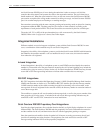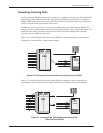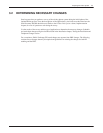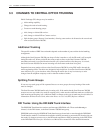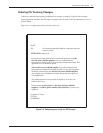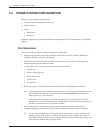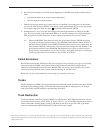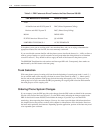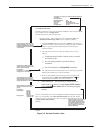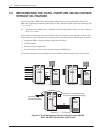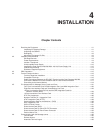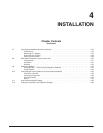
3-10
Installation and Maintenance
Volume
Octel Overture 200/300 Serenade 3.0
PB60014–01
Table 3-1
PBX Features to Direct T
runks to the Octel Overture 200/300
PBX Manufacturer and Model
Name of Feature
AT&T
All
but Horizon and A
T&T System 25
DDC (Direct Department Calling)
Horizon and A
T&T System 25
DGC (Direct Group Calling)
ROLM DEDICATED
FUJITSU/American T
elecom Focus
QUASI-DID
NOR
THERN TELECOM SL-1
AUTO-TERMINATE
If the phone system you are working with is not mentioned here, and you are trying to determine the
appropriate feature, first look for DIL, the most commonly used name.
If you can talk with someone familiar with the phone system, describe the feature (i.e., “ability to direct a
trunk or group of trunks to a specific extension or hunt group rather than being directed to an attendant
console for answer”). They should be able to supply the name of the feature for that phone system.
The DID/E&M T
runk Interface unit monitors and intercepts DID calls. Consequently
, these trunks are
not
directed by the DIL feature to the hunt group.
Trunk Selection
With
some phone systems, incoming calls hunt from the beginning of a trunk group (trunk 1, trunk 2,...)
for an available trunk, while outgoing calls hunt in reverse order (trunk 10, trunk 9, ...). Others specify
the first and second preference trunk groups for both incoming and outgoing calls. If a lar
ge two way
trunk group is to be split, reexamine the PBX programming for outgoing trunk selection and determine
the trunk group to use for outgoing calls.
Ordering Phone System Changes
If
your company is not the PBX provider, order changes from the PBX vendor on behalf of the customer
.
Provide a Service Provider Letter (Figure 3-5) to the PBX vendor indicating the changes needed to the
PBX for the Octel Overture 200/300, and schedule the changes. If possible, try to use that PBX’
s
terminology when requesting these changes. Y
ou may also want to provide them with information from
this chapter
. Review the previous sections of this chapter for information to fill in the blanks. Read over
the letter and in particular
, the footnotes. Depending upon the application, portions of the letter may need
to be expanded upon or deleted.



